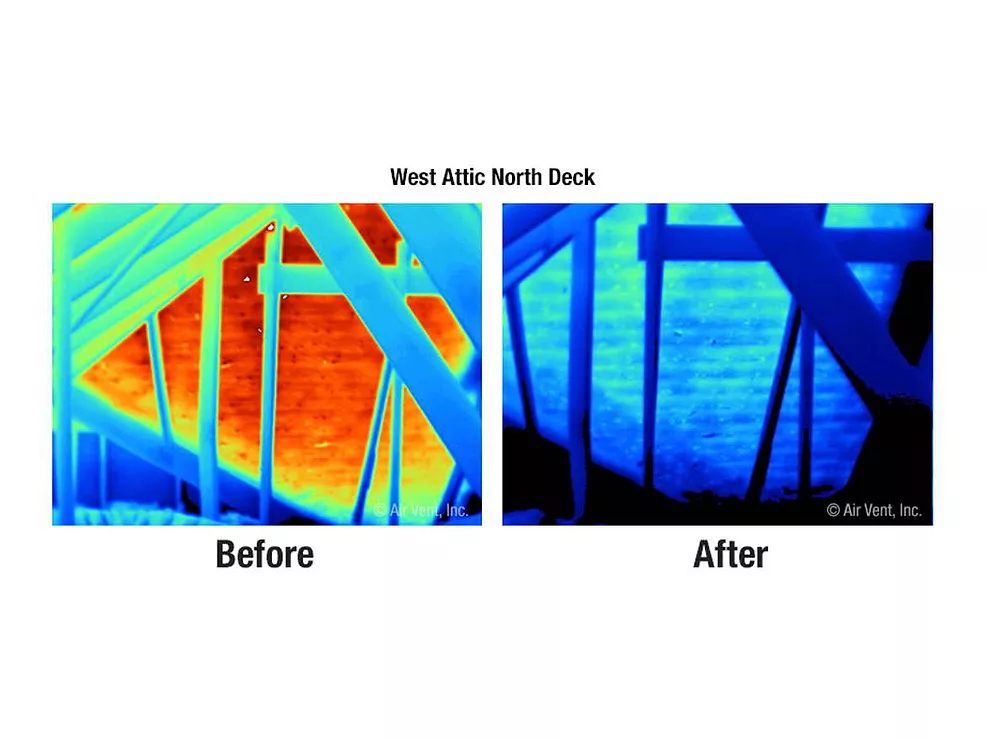News Analysis
Florida Emerges as the Epicenter of ICE Raids
While chaos unfolds in Los Angeles, immigration raids in the Sunshine State have lapped all other states

Amid rising immigration enforcement and chaos in Los Angeles, Florida has become ground zero for construction-site raids, attracting national attention and reshaping labor dynamics throughout the industry.
— Chris Pirrone/Roofing Contractor
Element Credits: HTGanzo, Adobe Stock; Charich, Adobe Stock
QUICKSHOT
- Florida is the Epicenter: Aggressive immigration enforcement actions — including record-setting raids and local law enforcement cooperation — have made Florida the focal point of federal construction-site crackdowns.
- Labor Market Disruption: The industry’s heavy reliance on immigrant labor, particularly in roofing and specialty trades, has left contractors vulnerable to workforce shortages, project delays, and legal risk.
- National Reverberations: What began in Florida is sparking wider unrest and scrutiny, with protests erupting in major cities and industry groups urging Congress to address immigration reform to stabilize the construction workforce.
As helmeted police in riot gear clashed with demonstrators in downtown Los Angeles last weekend, a phalanx of federal agents swept through neighborhoods, detaining dozens of suspected undocumented workers.
David Huerta, president of the Service Employees International Union of California, was injured and briefly detained by U.S. Immigration and Customs Enforcement agents while observing a Home Depot jobsite raid.
“I went to document what was happening, not to be treated like a criminal,” Huerta told Reuters after his release, his voice still hoarse from exposure to tear gas.
President Donald Trump has seized on the unrest, characterizing it as riotous; he has since deputized and deployed roughly 4,200 California National Guard troops, along with 700 Marines, sending them into a one-square-mile area of downtown L.A. where the protests have taken place.
"In the wake of this violence, California’s feckless Democrat leaders have completely abdicated their responsibility to protect their citizens. That is why President Trump has signed a Presidential Memorandum deploying 2,000 National Guardsmen to address the lawlessness that has been allowed to fester," said Karoline Leavitt, White House press secretary, on June 7.

Protesters face off against riot police during the first day of protests in downtown Los Angeles.
Image: Courtesy of NBC News
Amid the debate, there is growing consensus that the events unfolding in downtown L.A. are shifting from an isolated incident into a larger flashpoint. As rising tension seeks an offramp, the effects of increased immigration enforcement are thousands of miles away.
“These tactics sow terror in our communities and disrupt basic principles of safety in our city,” Los Angeles Mayor Karen Bass said at a news conference on Monday alongside city council members.
Based on events over the past several weeks, the real action — and its implications for roofing and construction — is not happening in California, but in states on the neighboring Gulf and Atlantic coasts.
Construction firms are now reassessing both short- and long-term project timelines as workforces are diminished overnight or disrupted by fear of enforcement.
“These raids remove many workers — through arrest or fear,” Jorge González-Hermoso, a researcher at the Urban Institute, told the Spanish-language daily EL PAÍS. “Even documented immigrants may withdraw due to heightened scrutiny.”
Enforcement Hotspot
 A data review of federal press releases, trade-group analyses and Homeland Security Investigations (HSI) reports confirms that Florida is now the epicenter of the Trump administration’s worksite enforcement actions.
A data review of federal press releases, trade-group analyses and Homeland Security Investigations (HSI) reports confirms that Florida is now the epicenter of the Trump administration’s worksite enforcement actions.
In late May, Operation Tidal Wave — a multiagency sweep led by HSI Tampa — resulted in 1,120 arrests of individuals deemed removable by ICE, the successor agency to the Immigration and Naturalization Service. Operation Tidal Wave marked the largest joint immigration operation in Florida's history, according to ICE officials.
Federal agents, in partnership with state and local law enforcement, detained more than 100 workers in Tallahassee on May 29 during one of the largest recent enforcement operations. Days earlier, 33 workers were arrested at construction sites in Wildwood, Fla.
Axios has created an interactive map of the United States, showing in each state the number of so-called 287(g) agreements — partnerships that deputize local law enforcement to enforce federal immigration laws. The results underscore Florida’s outsized role.
As of June 11, 2025, Florida leads the nation with 295 active or pending 287(g) memorandums of agreement, more than three times the 95 in Texas and nearly nine times the 33 in Georgia. Of the 42 states with at least one 287(g) agreement in place, all but a dozen have fewer than nine such agreements statewide.
 Why Florida?
Why Florida?
Florida’s large construction market — and its heavy reliance on immigrant labor — has proved to be a rich source of arrestees for ICE.
Trade and industry observers note the raids have been fueled in part by Gov. Ron DeSantis’s approval of sweeping state immigration reforms earlier this year, including Florida’s Senate Bill 4-C, which was signed into law on Feb. 13.
The law makes it a state felony for undocumented immigrants to enter or re-enter Florida and requires that they be held without bond before trial.
“Florida’s local agencies have opened their doors to ICE in a way that few other states have,” Jonathan Thompson, executive director of the National Sheriffs’ Association, said. “It has turned Florida into ground zero for deportation operations.”
DeSantis publicly praised the Tallahassee operation, describing it as a "major bust" and crediting state law enforcement with aiding federal efforts.
A coalition, including the ACLU of Florida, the ACLU’s national Immigrants’ Rights Project, Americans for Immigrant Justice, and multiple advocacy groups, filed suit in federal court, arguing that SB 4-C violates the U.S. Constitution by encroaching on federal authority over immigration and disrupting interstate commerce.
In April, U.S. District Judge Kathleen Williams issued a preliminary injunction blocking the law, calling it likely unconstitutional. The 11th U.S. Circuit Court of Appeals later upheld that order, allowing the legal challenge to proceed.
Industry Response
Roofing and general contracting firms have scrambled to shore up their compliance programs since the first construction-site raids began in March. Legal teams from Hunton Andrews Kurth and other national law firms warn that employers should anticipate unannounced I-9 audits, as well as multi-agency warrantless inspections of public areas, followed by judicial warrant searches of offices and private workspaces.
“Employers will face increased worksite inspections, I-9 scrutiny, audits, and targeted industry investigations, with severe penalties for non-compliance,” said the firm’s immigration-practice co-chair, speaking at a recent webinar.
RELATED
What Roofing Contractors Need to Know About Trump’s New Immigration Enforcement
Some national roofing companies have issued internal memos requiring foremen to carry employee verification documents at all times. Meanwhile, in-house counsel teams are developing rapid-response protocols to verify warrants and coordinate with local ICE liaisons.
The National Roofing Contractors Association — whose annual market-index survey lists labor as the top challenge for 61% of commercial roofers and 38% of residential contractors — has pushed Congress to enact a new H-2C visa program to stabilize the workforce.
In April, NRCA joined a bipartisan trade-association coalition urging lawmakers to pass legislation for Dreamers, Temporary Protected Status (TPS) holders, and agricultural workers, emphasizing that “contractors cannot find enough skilled labor without a workable visa solution.”
The Associated Builders and Contractors, representing over 23,000 merit-shop firms, has similarly called for practical progress on immigration reform to avert a broader construction slowdown.
Yet, to date, no formal mechanisms exist to limit the sizes of ICE operations or their geographic scope, leaving contractors to navigate a constantly shifting enforcement landscape.
How Unprecedented Is This?
Since the first employer-sanctions provisions took effect more than 35 years ago, immigration enforcement at U.S. job sites has fluctuated under successive presidencies, creating shifting risks for roofing and construction contractors.
From modest I-9 audits in the 1980s to televised multiagency raids today, the magnitude, aggressiveness and publicity of worksite actions reflect broader policy priorities and political pressure.
When President Ronald Reagan signed the Immigration Reform and Control Act in 1986, the federal government recorded about 50,000 formal removals that year.
By 1989, removals had climbed to roughly 73,000, largely a consequence of stronger border controls rather than interior workplace sweeps, according to the Department of Homeland Security’s Yearbook of Immigration Statistics.
President George H. W. Bush oversaw annual removals of nearly 80,000, while under President Bill Clinton, they subsequently surged to approximately 150,000 by 2000. Doris Meissner, former Clinton-era INS chief, doubled the agency’s staffing and tripled its budget in the 1990s to pursue both border and interior cases, including audits of construction firms.
Following the establishment of ICE by the Department of Homeland Security in 2003, total removals under President George W. Bush increased from approximately 160,000 in 2001 to 304,000 by 2008.
Although ICE’s HSI unit launched hundreds of additional I-9 audits, large-scale job-site raids remained sporadic.
President Barack Obama’s “smart enforcement” strategy produced a peak of 409,849 removals in 2012 before easing to around 343,000 by 2016. Programs such as Secure Communities targeted criminal convictions and recent border crossers rather than routine worksite sweeps, according to ICE annual reports.
Despite his 2016 campaign pledge to crack down, removals fell to about 237,000 by 2020 during Trump’s first term. However, there was a nearly threefold increase in I-9 audits — from 1,360 in 2017 to 6,848 in 2018 — which resulted in 779 criminal arrests and 1,525 administrative arrests of workers, according to ICE data.
Under President Joe Biden, deportations reached a pandemic-driven low of 89,000 in 2021 before rebounding to approximately 271,000 by 2024 — the largest annual total since 2014, according to ICE. Think-tank analysts at the Migration Policy Institute estimate that from October 2020 through February 2024, ICE carried out roughly 1.1 million removals.

Foreign-Laden Labor Market
According to the National Association of Home Builders, immigrants account for 38% of the construction workforce in both Florida and Texas, and comprise more than half of specialty trades, including roofing (52%), drywall installation (61%) and plastering (52%).
A Reuters survey of labor-market analysts noted that, while U.S. nonfarm payrolls have added an average of 150,000 jobs monthly, roofing and construction companies report chronic difficulty filling open positions, with quit rates outpacing hiring rates for skilled tradespeople.
Enforcement sweeps have intensified these pressures: some workers now avoid job sites entirely, fearing arrest; others have decamped to nonunion gig-economy roles.
“This underscores the critical need to reform our broken immigration system,” Michael Bellaman, president and CEO of ABC, said in a statement to EL PAÍS. “Foreign-born workers who are here legally need the assurance that they can continue to do their jobs without fear.”
RELATED
Hispanic Americans Feel Under Siege as Arrests Accelerate
Affordable and Illegal
Contractors, under pressure to meet deadlines, sometimes resort to hiring undocumented workers, often paid off the books. While penalties exist — including fines and misdemeanor charges in Florida — enforcement against employers has historically been sporadic.
While constituting a significant portion of the labor pool, estimates suggest that roughly half of immigrant workers may be in the country illegally, commonly called “undocumented” or “illegal alien.”
This reliance is particularly acute in states like Florida, Texas, and California, where immigrants comprise 40% or more of the construction workforce, according to a report by the University of Michigan.
Data from the U.S. Bureau of Labor Statistics shows that immigrant workers are significantly more likely to be employed in construction-related occupations. They often fill roles that are physically demanding, less desirable to native-born workers, and carry a higher risk of injury. In 2020, construction accounted for over 21% of all fatal work injuries.
Beyond labor availability, economic incentives play a substantial role. Undocumented workers are often paid less than their documented counterparts, contributing to lower overall labor costs for contractors. U.S.-born construction workers, for example, are estimated to earn an average of $3.12 more per hour than undocumented workers in the same position, according to the U-M study.
This wage disparity and potential misclassification as independent contractors enable some employers to avoid payroll taxes, unemployment insurance and workers' compensation costs, enhancing their competitive bids.
While there are significant legal risks, including civil fines ranging from $573 to $20,130 per unauthorized worker for first-time offenses — even potential criminal penalties for repeat violations — the perceived benefits of a readily available, lower-cost workforce often outweigh these deterrents for some contractors, according to M&A advisors at DueDilio.
Information Blackout
Data on ICE raids remain imperfect. ICE headquarters aggregates worksite enforcement tallies by field office, not by state, and responses to Freedom of Information requests are often delayed or heavily redacted.
Some local law enforcement agencies decline to disclose their level of cooperation with ICE, making it difficult to draw firm conclusions about the precise scope of operations nationwide.
Nonetheless, the weight of available evidence confirms that Florida has experienced more ICE construction-site raids than any other state since March 2025, by a margin of at least 10-to-1 when measured by 287(g) local-agency partnerships.
Texas sits firmly in second place, driven by its sprawling border districts and a smaller but still significant cadre of local law-enforcement collaborators.
Looking Ahead
In this vein, the roofing and construction sectors are bracing for the next phase of enforcement. Contractors and compliance officers expect ICE to refine its tactics, potentially adding digital I-9 verification mandates and expanding civil immigration enforcement into worker classification and wage theft investigations.
“Our schedules are in chaos,” said Rober Prophit of Outlast Construction in western Washington, describing how two detained roofers — one a documented citizen — were returned to the site after proving their status. “We need a better system so our job sites aren’t disrupted and homeowners aren’t left in limbo.”
Rick Hermanns, CEO of HireQuest, a nationwide staffing agency that places workers of all stripes, including roofing and construction, into temporary employment, said the immigration imbroglio has put many contractors in a bind.
His firm, which employed 60,000 people last year, offers fully vetted I-9 verified workers for varying lengths of time, and that business has been brisk as ICE enforcement has intensified.
“If you're a company and you need 10 people to load trucks, you literally can call us that morning,” he said by phone. “Have 10 people there to unload the truck and they're done at the end of the day.”
Delays caused by labor disruptions can jeopardize contracts, while the reputational and legal risks of hiring undocumented workers remain significant. Yet, with labor pipelines thinning and enforcement ramping up, the industry faces a dilemma: comply and fall behind — or risk liability to stay on schedule.
As immigration policy continues to evolve, contractors are calling for clarity, consistency and reform that acknowledges the economic realities of modern construction.
Without it, experts warn, the nation's building capacity—and its workforce—will remain in flux.
* * *
Action Items for Roofing Contractors
Strengthen I-9 Compliance and Document Readiness: Conduct internal audits of all I-9 forms, ensure they’re up to date, and train foremen to carry verification documents onsite. Prepare for surprise inspections by ICE or local enforcement.
Develop Rapid-Response Protocols: Create clear procedures for jobsite leaders to follow during enforcement actions, including how to verify warrants, contact legal counsel, and communicate with employees and clients.
Reassess Workforce Strategy and Vendor Partnerships: Consider working with staffing agencies that guarantee I-9-verified workers and explore diversified hiring strategies to reduce project vulnerability to sudden labor loss.
Engage in Advocacy for Immigration Reform: Join industry associations (e.g., NRCA, ABC) pushing for a stable visa program and legal protections for essential immigrant workers to ensure long-term workforce sustainability.
Prioritize Contingency Planning in Project Timelines: Factor potential labor disruptions into project bids, schedules, and client contracts. Build in buffer periods to reduce financial and reputational risk from jobsite delays.
*Correction: Associated Builders and Contractors was quoted as saying it sought practical progress on immigration reform. The statement was not a direct quote, but rather a reflection of the general sentiment. We regret the error.
Looking for a reprint of this article?
From high-res PDFs to custom plaques, order your copy today!




.webp?height=200&t=1735849515&width=200)



